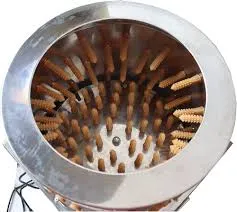chicken transportation cages
Nov . 12, 2024 06:20 Back to list
chicken transportation cages
The Importance of Chicken Transportation Cages
In the modern agricultural and poultry industries, the transportation of chickens plays a crucial role in ensuring that these animals reach their destinations safely and humanely. One of the key components in this process is the chicken transportation cage. These cages are specifically designed to provide a comfortable and secure environment for chickens during transit, whether it be from farm to market, hatchery, or processing facilities. Understanding the significance of chicken transportation cages, their design features, and their impact on animal welfare can help foster better practices in poultry transport.
The Design of Chicken Transportation Cages
Chicken transportation cages are constructed with various factors in mind, including the size, ventilation, and overall durability. Typically made from sturdy materials such as galvanized steel, plastic, or wood, these cages must withstand the rigors of transportation while ensuring the safety of the chickens inside.
One of the critical aspects of cage design is ventilation. Chickens, like other livestock, require adequate airflow to thrive and remain calm during transit. Proper ventilation helps maintain an optimal temperature, reduces stress, and minimizes the risks of respiratory issues. The design usually incorporates slatted sides or openings that allow airflow while preventing the chickens from escaping or being harmed.
Another important feature is the size of the cage. Cages need to be appropriately sized to accommodate the number of chickens being transported while allowing enough space for each bird to stand, turn around, and lie down comfortably. Overcrowding can lead to stress, injury, and even death during transport. Regulations often dictate the maximum number of chickens per cage based on their size and weight, and adhering to these guidelines is essential for maintaining animal welfare.
Animal Welfare Considerations
The welfare of chickens during transportation is a significant concern in the poultry industry. Chickens can experience extreme stress during transport, which can impact their health and well-being. Therefore, using well-designed transportation cages is crucial in mitigating these stressors.
chicken transportation cages

Animals that are transported inappropriately can face a range of issues, including dehydration, injuries from overcrowding, and exposure to extreme temperatures. Proper chicken transportation cages can help reduce these risks by providing ventilation, comfort, and protection. Additionally, minimizing the time spent in transit and ensuring that animals have access to water can further enhance their well-being during transportation.
Research has indicated that humane handling and transportation practices lead to better meat quality and a reduced incidence of disease. By prioritizing chicken welfare during transport, producers can improve their overall efficiency and profitability. Improved animal welfare practices also resonate well with consumers, who are increasingly concerned about how animals are treated in the food production process.
Innovations in Chicken Transportation
As the poultry industry evolves, so too does the technology surrounding chicken transportation cages. Innovations such as anti-tipping designs and modular cages that can be customized based on the specific needs of different chicken breeds have emerged. Additionally, advancements in materials have led to lighter and more durable cages that can withstand harsh conditions while minimizing the environmental impact.
Furthermore, the shift towards more environmentally-friendly practices is influencing the design of chicken transportation cages. Manufacturers are exploring recyclable materials and designs that align with sustainable practices, ensuring that the poultry industry contributes to a greener future.
Conclusion
In conclusion, chicken transportation cages are a vital component of the poultry supply chain. Their thoughtful design ensures the safe and humane transport of chickens, addressing key issues related to animal welfare. By prioritizing proper cage design, ventilation, and adherence to regulatory standards, poultry producers can foster better practices that benefit the animals, their operations, and ultimately the consumers. As innovations continue to shape the industry, the focus on humane and efficient transportation solutions will play an essential role in the future of poultry farming. By committing to the welfare of chickens during transportation, we not only enhance their quality of life but also contribute positively to the overall sustainability and ethics of the poultry industry.
-
Hot Sale 24 & 18 Door Rabbit Cages - Premium Breeding Solutions
NewsJul.25,2025
-
Automatic Feeding Line System Pan Feeder Nipple Drinker - Anping County Yize Metal Products Co., Ltd.
NewsJul.21,2025
-
Automatic Feeding Line System Pan Feeder Nipple Drinker - Anping County Yize Metal Products Co., Ltd.
NewsJul.21,2025
-
Automatic Feeding Line System - Anping Yize | Precision & Nipple
NewsJul.21,2025
-
Automatic Feeding Line System - Anping Yize | Precision & Nipple
NewsJul.21,2025
-
Automatic Feeding Line System-Anping County Yize Metal Products Co., Ltd.|Efficient Feed Distribution&Customized Animal Farming Solutions
NewsJul.21,2025






